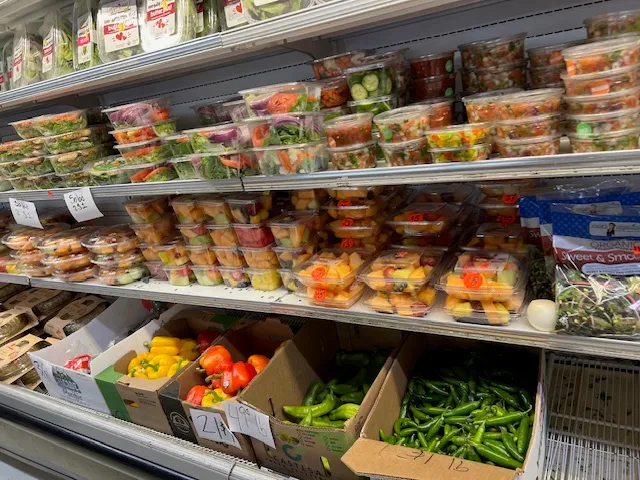Table of Contents
Octopuses are extraordinary marine creatures that belong to the class Cephalopoda, which also includes squid and cuttlefish. Known for their intelligence and unique appearance, octopuses have soft, rounded bodies, eight flexible arms lined with suction cups, and the remarkable ability to change color and texture to blend seamlessly into their surroundings. They are found in oceans worldwide, from shallow coral reefs to deep-sea environments.
These animals are celebrated for their problem-solving skills and complex behaviors, such as escaping enclosures, using tools, and displaying playful curiosity. Octopuses have three hearts, blue blood (due to copper-based hemocyanin), and a decentralized nervous system, with much of their neural network located in their arms, allowing for incredible dexterity and multitasking.
1. Overview
Octopuses are cephalopod mollusks known for their intelligence, eight arms, and ability to adapt to diverse marine environments. A global culinary delicacy, they are prized for their tender texture and mild, slightly sweet flavor. This guide explores their biology, culinary applications, aquaculture practices, and economic significance.
2. Global Varieties
- Common Octopus (Octopus vulgaris)
- Size: 1–3 ft (arms) | Habitat: Mediterranean, Atlantic, Pacific.
- Culinary Use: Grilled, stewed, sushi.
- Giant Pacific Octopus (Enteroctopus dofleini)
- Size: 10–16 ft | Habitat: North Pacific.
- Note: Largest species; meat requires tenderizing.
- Day Octopus (Octopus cyanea)
- Size: 2–4 ft | Habitat: Indo-Pacific coral reefs.
- Use: Raw in poke, sashimi.
- Baby Octopus (Octopus parvus)
- Size: 3–5" | Habitat: Global coastal waters.
- Popularity: Pickled, grilled appetizers.
3. Price Factors
- Wild-Caught:
- Mediterranean common octopus: $10–$20/kg.
- Japanese madako (raw for sushi): $30–$50/kg.
- Farmed: Limited production (Spain, Mexico): $15–$25/kg.
4. Physical Traits
- Colors: Live: Camouflaging red, brown, or gray; cooked: creamy white.
- Smell: Fresh, briny ocean scent; spoiled octopus smells ammonia-like.
- Flavor: Mild, slightly sweet, with a tender-chewy texture.
5. Culinary Uses
- Raw: Sashimi (tako in Japan), ceviche (Latin America).
- Grilled: Charred with olive oil and paprika (Spain’s pulpo a la gallega).
- Curries/Stir-Fries: Thai pla muk pad prik, Korean nakji bokkeum.
- Stews/Soups: Greek octopus stifado, Japanese takoyaki (fried balls).
- Baking: Stuffed with rice, herbs, and tomatoes (Mediterranean).
- Popular Dishes:
- Takoyaki (Japan): Fried dough balls with octopus.
- Polvo à Lagareiro (Portugal): Roasted with potatoes and garlic.
6. Nutrition & Health Benefits
- Macronutrients: High protein (25g/100g), low fat (2g/100g).
- Vitamins/Minerals: B12, iron, selenium, omega-3s.
- Health Benefits: Supports brain function, muscle repair, and heart health.
7. Cultivation & Capture
- Wild Harvest:
- Traps/Pots: Clay or plastic pots (Mediterranean, Asia).
- Spearfishing: Artisanal diving in coastal regions.
- Aquaculture:
- Tank Systems: Spain, Mexico, Japan (experimental).
- Cephalopod Farms: Challenges include high mortality rates.
- Major Producers: Japan, Spain, Morocco, Mauritania.
8. Byproducts
- Ink: Used in pasta, risotto, and sauces (adds briny umami).
- Skin: Processed into collagen supplements.
- Viscera: Fishmeal or fertilizer.
9. Processing & Storage
- Live Storage: Keep in chilled seawater (1–2 days).
- Freezing: Blanch before freezing to retain texture (6–12 months at -4°F).
- Canning: Cooked in brine or oil (shelf-stable 2+ years).
10. Major Producers & Trade
- Top Producers:
- Japan: 40% of global catch (Hokkaido, Tsukiji Market).
- Spain/Morocco: Mediterranean and Atlantic fisheries.
- Exporters: Spain (to EU/USA), Mauritania (to Asia).
- Importers: Japan, USA, South Korea, Italy.
11. Climate Conditions
- Temperature: 50–75°F (10–24°C) for optimal growth.
- Salinity: 30–35 ppt (marine environments).
- Habitat: Rocky seabed, coral reefs, and sandy substrates.
12. Diseases & Risks
- Bacterial Infections: Vibrio spp. in poorly handled catches.
- Parasites: Rare but possible in raw preparations.
- Aquaculture Challenges: Sensitivity to water quality and stress.
13. Return on Investment (ROI)
- Farming Costs: $50,000–$100,000/ton (feed, tank systems).
- Profit Margins: 20–35% (premium markets); ROI in 3–5 years.
14. Quick Recipes
- Grilled Octopus Salad: Toss with olive oil, lemon, and oregano.
- Spicy Korean Stir-Fry: Sauté with gochujang, veggies, and sesame.
- Octopus Carpaccio: Thinly sliced with citrus and chili oil.
15. Sustainability Challenges
- Overfishing: Declining wild stocks in Mediterranean/Asia.
- Bycatch: Trapped in bottom trawls, damaging ecosystems.
- Solutions:
- MSC Certification: Sustainable wild fisheries.
- Aquaculture Innovation: Closed-loop systems (Japan).
16. Conclusion
Octopus is a culinary marvel, bridging tradition and modern gastronomy. Balancing wild harvests with ethical aquaculture and strict sustainability practices is key to preserving this resource.
From a culinary perspective, octopus is prized in many cuisines, such as Greek, Japanese, and Korean, where it is prepared in a variety of ways—grilled, boiled, or even served raw. Beyond their culinary appeal, octopuses are also a source of fascination in science and art, symbolizing adaptability and mystery.









